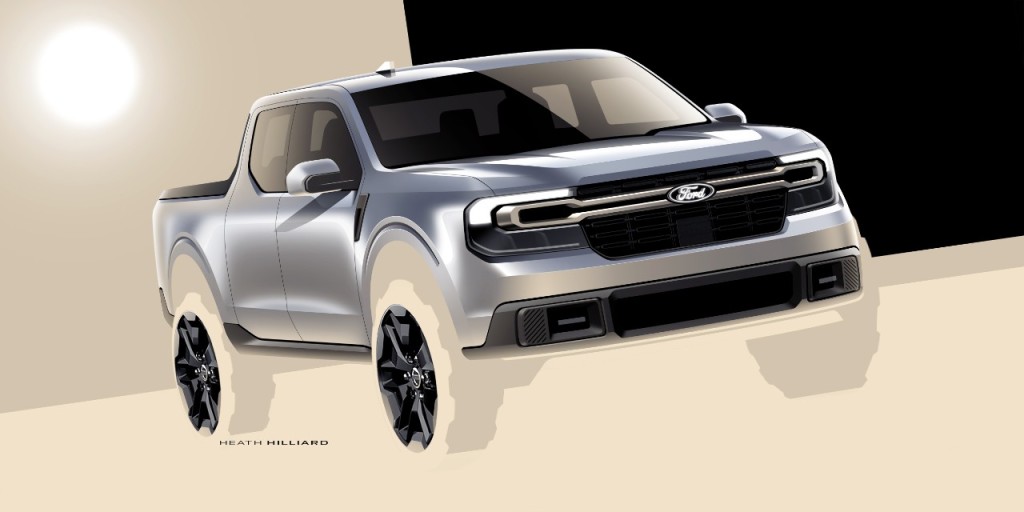An up-close look at bringing the clever small truck to the market
By Gary S. Vasilash
The Ford Maverick is what is being called a “white space” vehicle, a small—199.7-inch long—pickup truck with four doors and seating for five. As a point of reference, a Ford Ranger is 210.8 inches long and an F-150 is 231.7 inches long.
It will come standard with a hybrid powertrain that will provide an estimated combined fuel efficiency rating of 37 mpg. And the standard model has a payload capacity of 1,500 pounds and is capable of towing 2,000 pounds.

The starting MSRP for the Maverick is $19,995.
And when asked whether this is some sort of artificially low price, both Chris Mazur, Maverick chief program engineer, and Trevor Scott, marketing manager for the Maverick (and Ranger), unambiguously maintain that this truck is the real deal.
It is, they say “Built Ford Tough.”
That claim is fairly bedrock for the Ford truck lineup so you can be confident that they’re not going to be using it unless there is confidence that they’re going to deliver with this pickup the same way that’s done for the other Ford trucks.
The interesting thing about the Maverick is how it was developed—done in a way unlike has been the case at Ford (as well as other companies that develop, well, anything). And this approach has not only led to the various innovations that are part of the Maverick, but also contributes to the cost-efficiency that the MSRP underscores.
One of the things about the truck is that the team, observing the way that real people use their trucks (not that the people on the team aren’t real people, too) is that many of them hack solutions, whether it is drilling holes in the sidewalls of the box to access electricity or jury-rigging the means to secure a mountain bike in the back. So Mazur says that they thought about that and have made power access simply available will provide CAD files that will allow owners to 3D print tooling for things like attachments.
It is almost that DIY ethos that is characteristic of the product development.
When the development started—pre-COVID—it was decided that there would be a cross-functional team consisting of representatives and participants from all functions that would be necessary to get the job done.
All of the participants wouldn’t just be in the same email group—they would be in the same room. Finance. Manufacturing engineering. Everyone was there. If there was a question to be answered, there was the person—right over there—who probably had the answer.
And they worked to be fast. Their “audacious goal” was to cut 25 months out of the development program.
They made quick models. They plastered the wall with documents and Post-It notes.
When it was time for the upper management reviews, it was there in the room, with the working documents and models and whatnot. Binders and PowerPoints were not on the schedule.
And when COVID hit and the people left the room for their own houses, they were still a team that knew one another, knew who to talk to to get answers, knew who was involved in what aspect of the development.
They were able to get things done.
They didn’t hit the 25-month goal, Mazur admits.
But they took 20 months out of the process.
Remarkable by any measure. And they had a pandemic to contend with.
Realize that as Ford has decided that things like trucks are important to its offering in a way that cars no longer are, the Maverick is a key vehicle in its product lineup.
Mazur and Scott are our special guests on this edition of “Autoline After Hours.”
John McElroy and I are joined by Mike Martinez of Automotive News, who covers Ford.
It is a full hour devoted to the Maverick.
If you have any interest in the truck or in an innovative approach to development, you’ve got to watch this show because you’re not likely to ever get a better sense of how the Maverick has been created.
You can see it all here.
